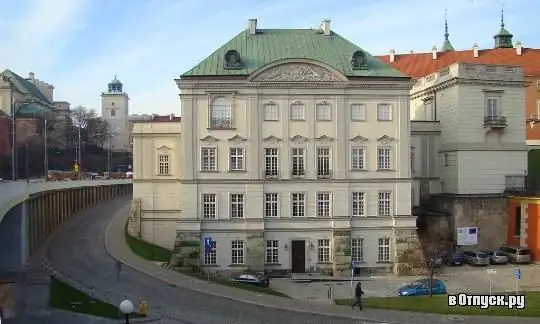
Description of the attraction
Palace "under the badge" - a palace built in 1720-1730 in the late Baroque architectural style in Warsaw next to the Royal Palace. Construction work was carried out according to the project of the architect Yakub Fontan. The palace got its unusual name because of the copper roof, which was a rarity in the first half of the 18th century. Since 1989, the palace has been a branch of the Royal Palace Museum.
Initially, on the territory of the palace there was an ordinary house that belonged to the court blacksmith under King Jan Casimir. The house was built in 1656. The next owner of the house was the voivode Jerzy Lubomirski, by whose order the house was modified and expanded. The southern porch was built, and in 1720-1730 the northern porch, designed by Yakub Fontan, appeared. The roof was covered with a material unusual for those times - copper tin.
In 1777, the palace passed into the possession of Stanislav Poniatovsky, who wished to change the interior interiors and invited the architect Dominico Merlini to perform the work. After Stanislav's death, the palace passed to his relative Jozef Poniatowski, who turned his house into a real fashionable salon. The palace hosted theatrical performances, balls and meetings of the Warsaw bohemians.
In 1820, the palace passed into the possession of the Russian Emperor Alexander, after which the building was used as a military library.
After the end of World War II, some changes took place in the palace, however, the main building retained its pre-war appearance.
In 1989, the palace became part of the Royal Castle. Currently, there is an exposition of carpets, as well as the living quarters of Józef Poniatowski.






